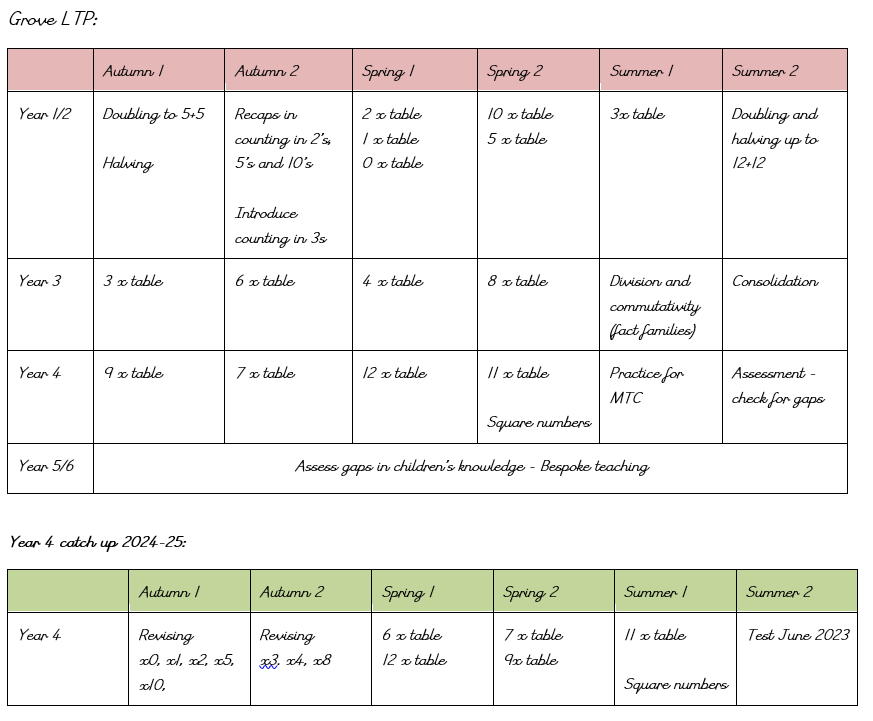0.2 Maths
Leadership of Maths at Grove Primary School.
Accountable: Miss Lucy Fayers
Responsible: Mrs Rachel Welch, Mr James West
Intent
At Grove Primary School, our children are able to reason mathematically, solve problems and develop fluency in their understanding of number through number rich environments. Children are enabled to progress stage by stage at a pace that is appropriate to them, allowing for deeper conceptual understanding and fluency.
Within our Maths Curriculum, we aim for each of our Maths sessions to support the children with the following principles of their learning:
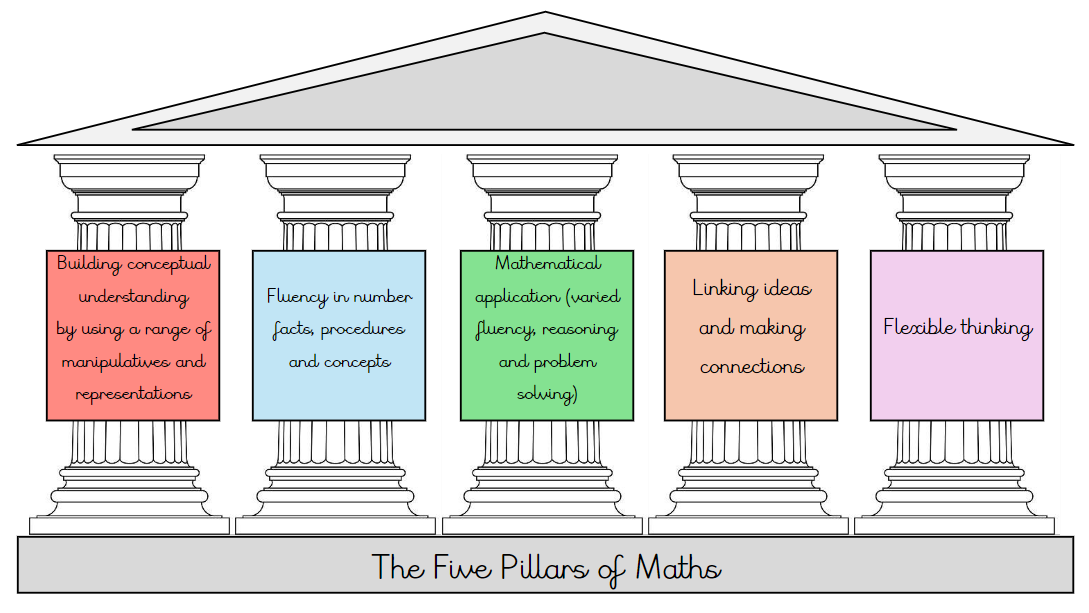
Implementation:
-
Children acquire and practice key skills including; arithmetic, times tables etc.
-
Have opportunities to develop fluency, problem solving and reasoning skills.
We also strongly believe children learn best when there is a shift from short term memory to long term memory. For this reason, our Maths curriculum includes opportunities to ensure depth of learning through regular planned retrieval opportunities.
When possible and appropriate, curriculum links are developed. Maths will be explored and applied across the whole curriculum and children will be able to apply knowledge and skills across the curriculum.
The National Curriculum for Mathematics (2014) aims to ensure that all pupils:
- become fluent in the fundamentals of mathematics, including through varied and frequent practice with increasingly complex problems over time, so that pupils develop conceptual understanding and the ability to recall and apply knowledge rapidly and accurately
- reason mathematically by following a line of enquiry, conjecturing relationships and generalisations, and developing an argument, justification or proof using mathematical language
- can solve problems by applying their mathematics to a variety of routine and non-routine problems with increasing sophistication, including breaking down problems into a series of simpler steps and persevering in seeking solutions.
As such, our whole school environment enables children to use a range of resources and encourages independent reasoning and problem solving. All children (from Nursery to Year 6) are encouraged to use concrete and pictorial representations to show, prove and explain their abstract thoughts and mathematical working. This also develops a conceptual understanding that enables children to transfer their mathematical skills into real life contexts.
Concrete, Pictorial and Abstract
All children (from Nursery to Year 6) are encouraged to use concrete and pictorial representations to show, prove and explain their abstract thoughts and mathematical working. This also develops a conceptual understanding that enables children to transfer their mathematical skills into real life contexts.
Impact
We aspire for children to leave Grove Primary with a skill set that enables them to reason and problem solve in a technologically evolving world, ensuring they are confident to tackle any mathematical challenges they may face.
Long Term Plans
Our teachers use our Long Term Plans to plan and teach lessons which are well sequenced and enable all pupils to build on their prior knowledge to develop a conceptual understanding of key mathematical principles. They use our Medium Term documents to identify key steps within each unit to allow full coverage of the Primary Mathematics curriculum. Our highly skilled teachers use these resources to plan differentiated lessons that meet the developmental needs of each child, allowing them to progress to their next stage of learning. Grove Primary works closely with Westwood Primary to share skill sets and subject knowledge to ensure lessons are always of the highest quality.


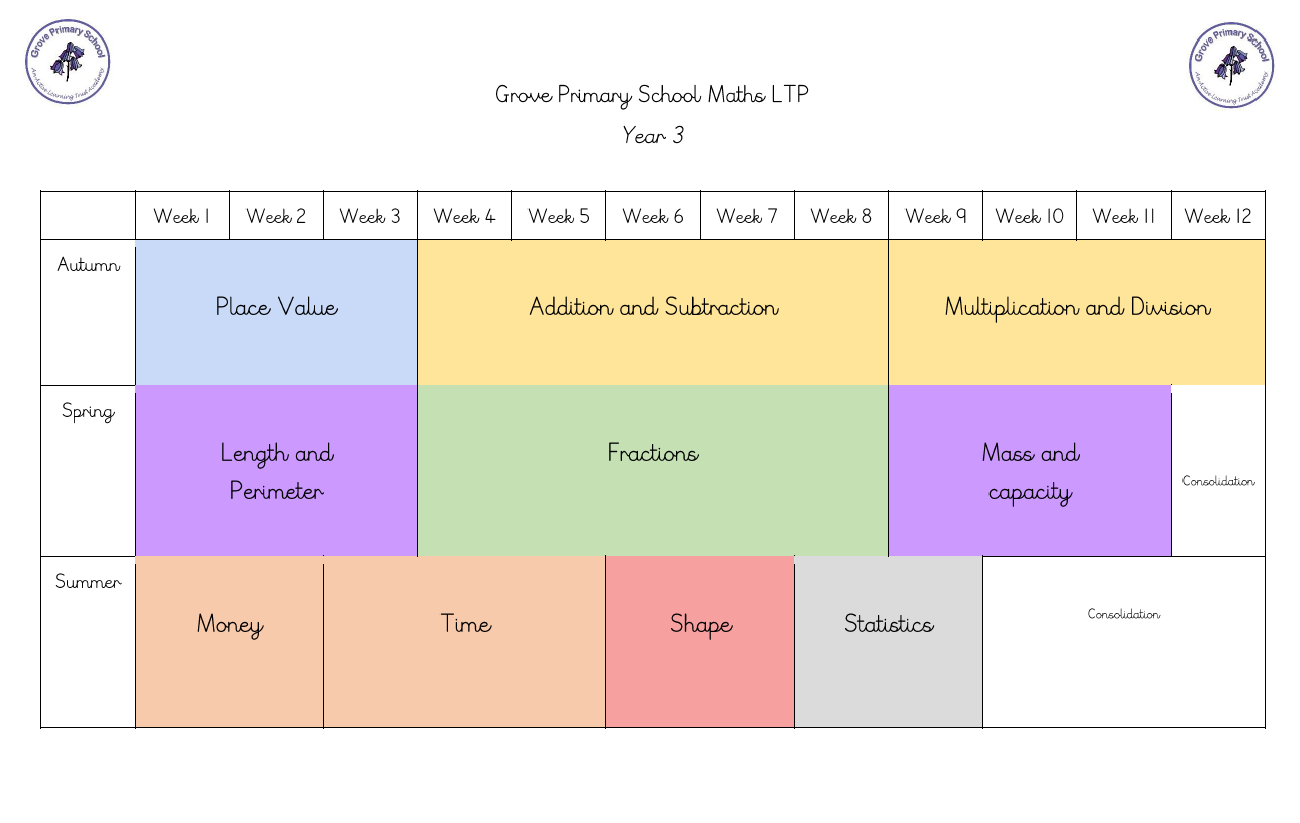
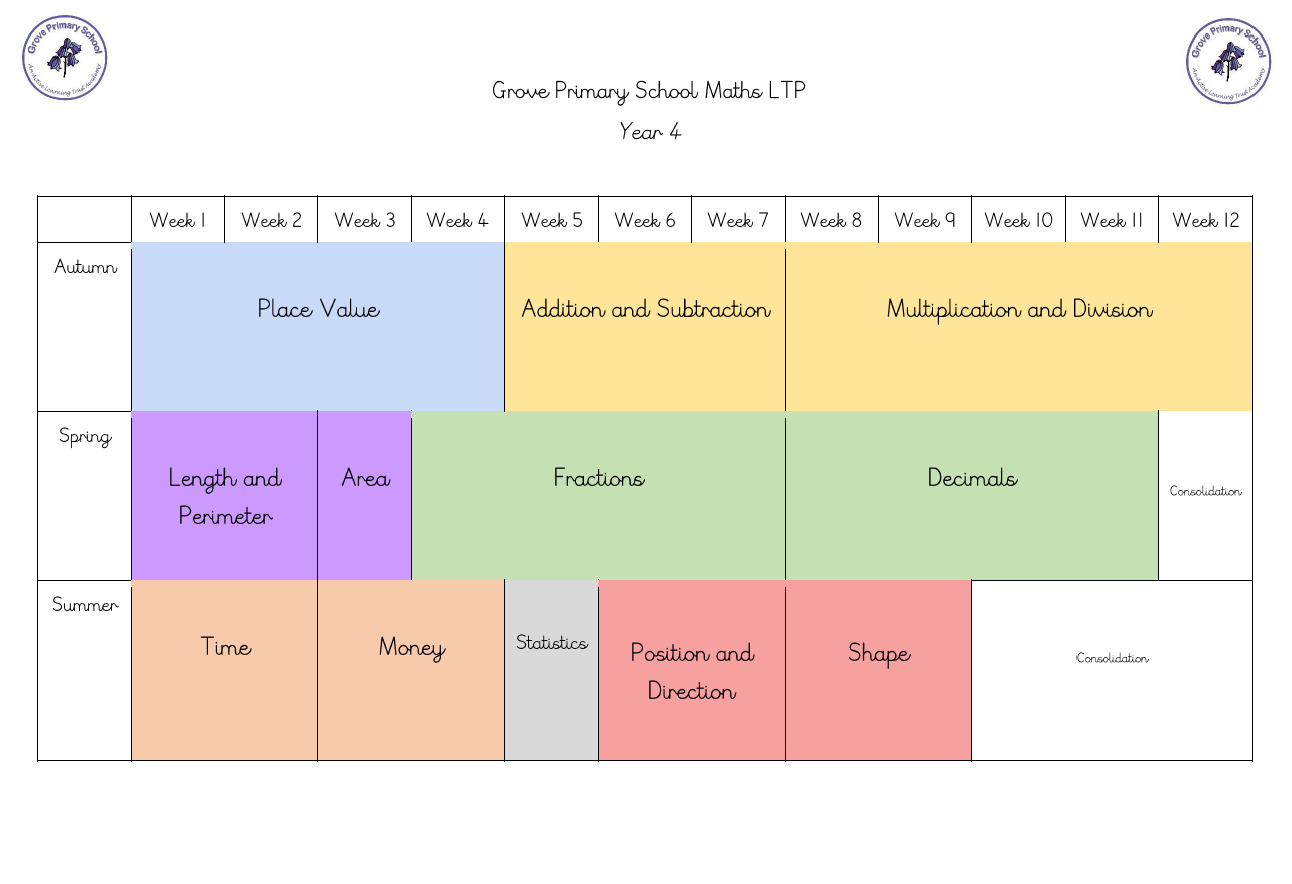

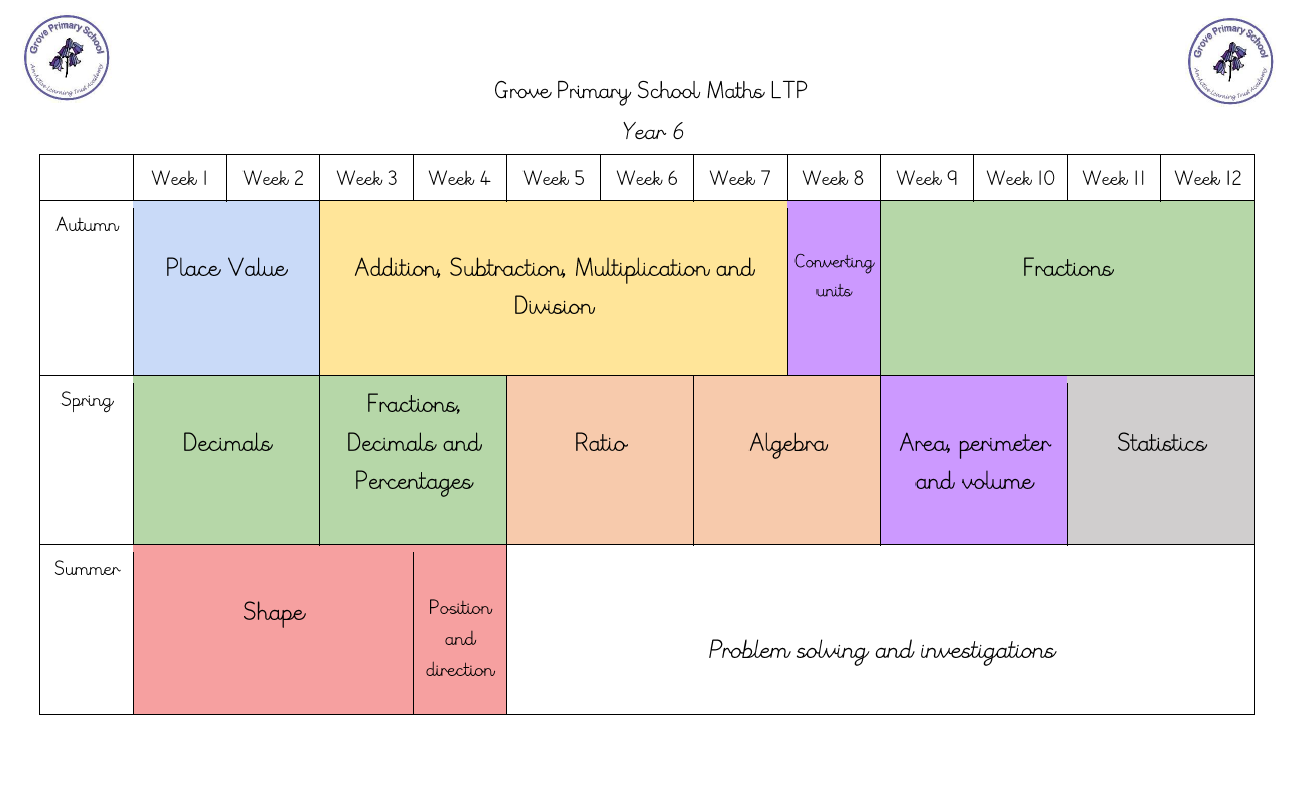
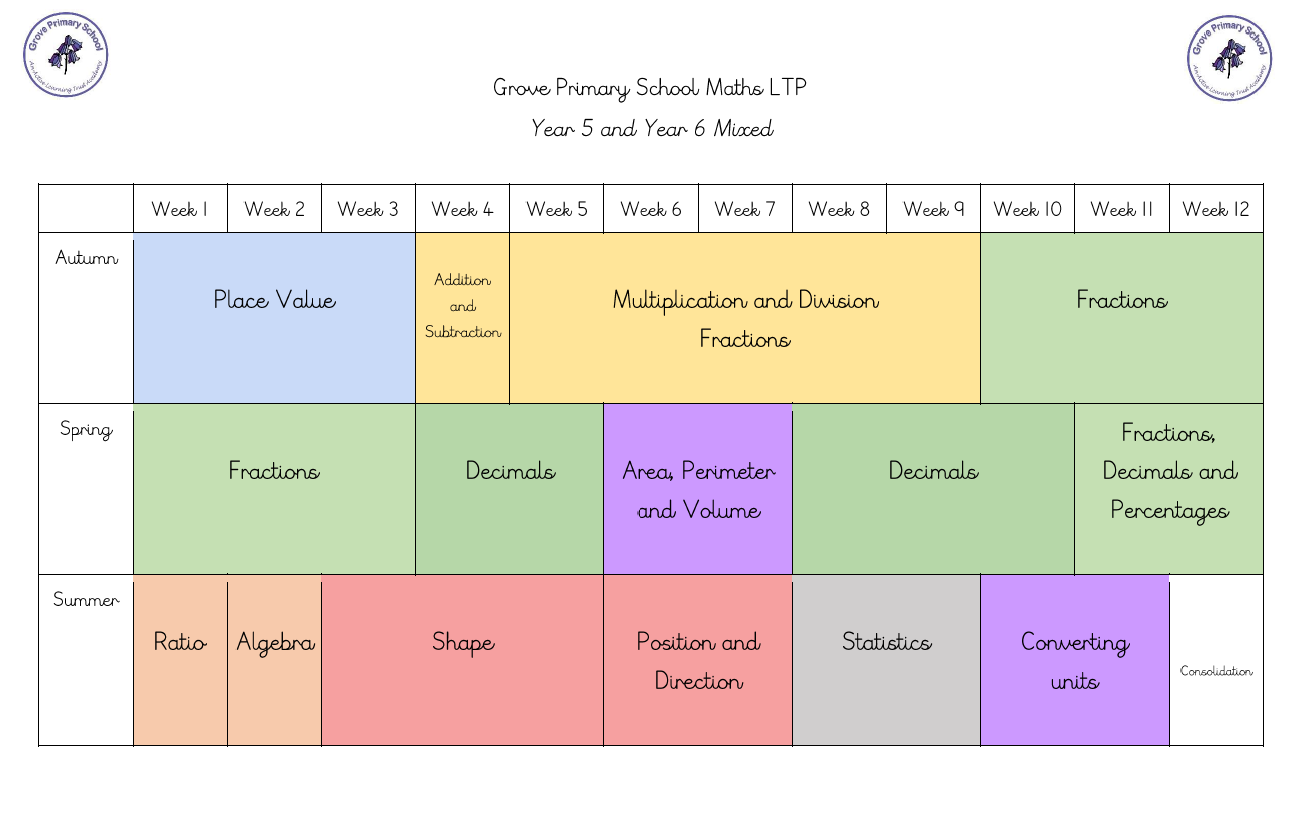
Adapting Maths
At Grove Primary School, we believe in adapting our lessons to suit the needs of our children. Learning content is adapted and scaffolds are used to enable all pupils to access their learning and to challenge their understanding of key concepts. 
Times tables
At Grove Primary School, we value the importance of children's times table knowledge. We understand that a secure understanding of multiplication facts will support children's arithmetic skills by developing their fluency and will enable them to access other areas of the curriculum more readily.
Because of this, we follow a LTP to map out the teaching of times table facts to support the children's understanding and automaticity of recall.
